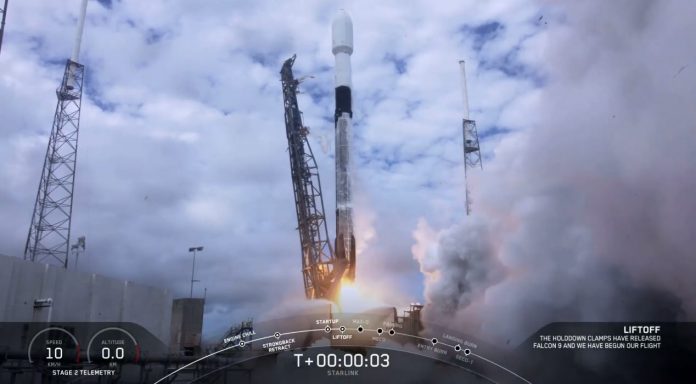A Falcon 9 rocket soared into a cloud-covered sky over Florida’s Space Coast Saturday morning sending another round of the company’s internet satellites designed to provide internet down on Earth into space.
SpaceX’s second attempt this week to send up another batch of 60 Starlink Satellites Saturday morning was successful after the first attempt earlier in the week was called off about 10 minutes before the liftoff was scheduled.
The rocket launched at 11:31 a.m. during the instantaneous window, meaning SpaceX did not have a longer timeframe to wait out possible weather violations.
Despite the clouds, the launch could be seen from Orlando where the University of Central Florida Knights are set to play their annual Space Day game, a fitting kickoff for game day.
Good morning, @elonmusk
pic.twitter.com/dWn0GEhURT
— UCF Football
(@UCF_Football) October 24, 2020
SpaceX scrubbed the first attempt Thursday for a small technical issue.
SpaceX CEO Elon Musk said the team reported “a small-seeming issue with loss of upper stage camera,” referring to the rocket’s second stage. “Probably nothing serious, but standing down to re-examine (the) whole vehicle just in case,” Musk said in a tweet.
Leading up to Saturday’s launch, SpaceX lead manufacturing engineer Jessica Anderson said the issue was resolved and the rocket was healthy.
SpaceX landed the booster about 8 minutes after launch on the droneship called Just Read the Instruction already waiting in the Atlantic Ocean, marking the third flight for this rocket first-stage. SpaceX wasn’t attempting to catch the fairings for this launch but will scoop them up after they land in the water.
Falcon 9’s first stage lands on the Just Read the Instructions droneship pic.twitter.com/ECFQr2jZnN
— SpaceX (@SpaceX) October 24, 2020
SpaceX officials said the goal of Starlink is to help people who have not connected to the web to have access to these services. SpaceX usually sends up 60 satellites per launch.
A launch on Oct. 18 less than a week ago marked the 14th round of Starlink satellites being sent into low-Earth orbit. The constellation will grow to around 800 with this latest launch.
Starlink internet is currently undergoing its first round of beta testing with plans to expand it next year.
The first to benefit from the space-based internet have been first responders in Washington state during their response to wildfires and the Hoh Tribe, also in Washington.
“What a difference high-speed internet can make! Our children can participate in remote learning, residents can access healthcare,” the Hoh Tribe said in a tweet earlier this month. “We felt like we’d been paddling up-river with a spoon on this. SpaceX Starlink made it happen overnight.”
This week an independent school district in a rural Texas community announced its participation in the Starlink pilot program to provide students and their families access to high-speed internet.
The project will initially provide free Internet service to 45 families in the Pleasant Farms area of south Ector County, according to a news release from the school district. This will begin in early 2021, with plans to expand it to an additional 90 families.
“Our research clearly indicates the lack of broadband access is a crisis in Ector County,” Ector County Independent School District Superintendent Dr. Scott Muri said. “In collaboration with SpaceX, we are providing space-based Internet service to students and families that have few, if any, options. The partners with us share our vision for equity and access for all students. Today, we take a giant leap forward in closing the digital divide that exists within our community.”






























